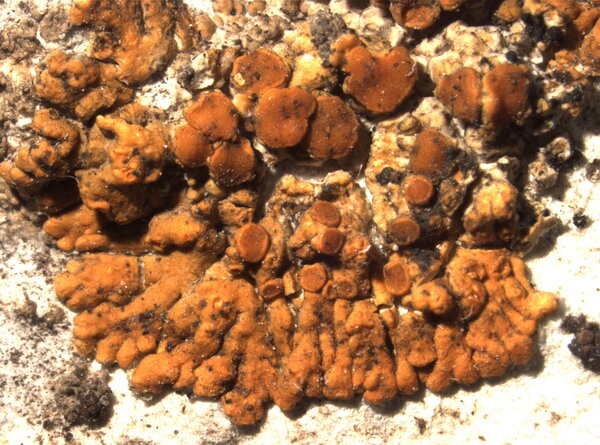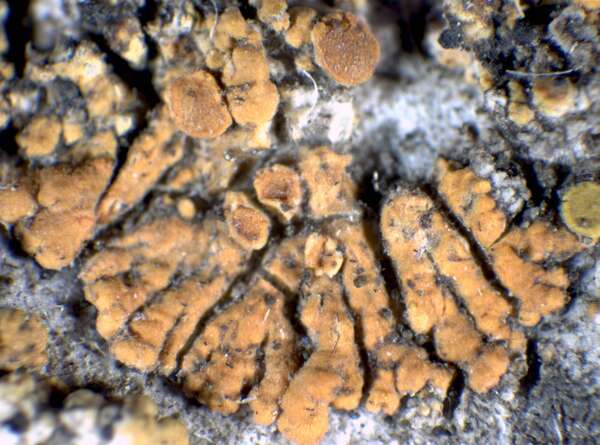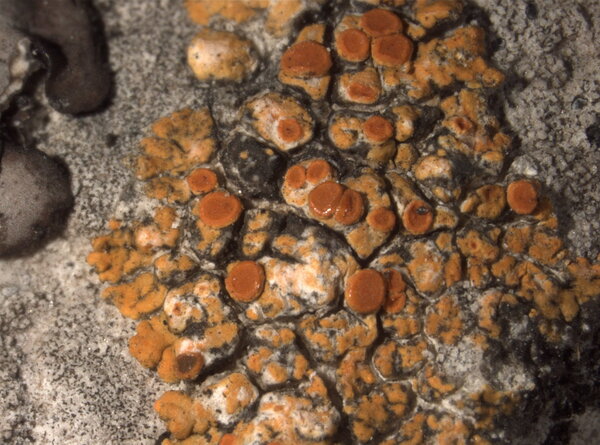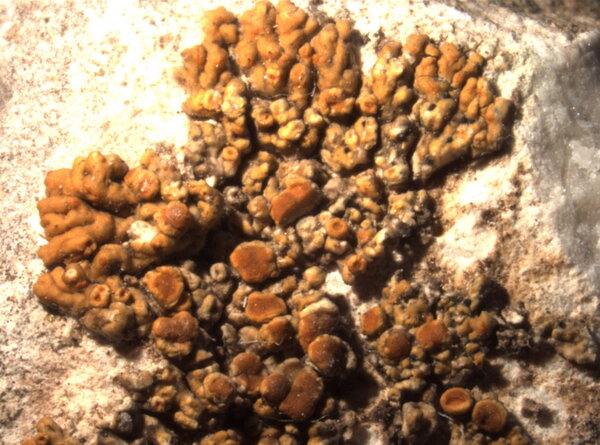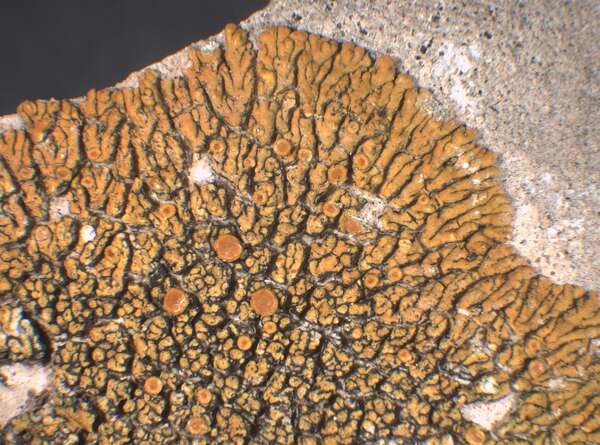Variospora australis (Arnold) Arup, Søchting & Frödén
Nord. J. Bot., 31: 80, 2013. Basionym: Physcia australis Arnold - Flora, 58: 154, 1875.
Synonyms: Caloplaca australis (Arnold) Zahlbr.; Candelariella australis (Arnold) Zahlbr.; Candelariopsis australis (Arnold) Szatala; Fulgensia australis (Arnold) Poelt; Gasparrinia australis (Arnold) Dalla Torre & Sarnth.; Gyalolechia australis (Arnold) J. Steiner
Distribution: N - Frl, Ven (Nascimbene 2003, 2004), TAA (Westberg & Kaernefelt 1998, Nascimbene & al. 2022), Piem (TSB 33944), VA (vidi!). C - Abr (Nimis & Tretiach 1999). C - Camp (Aprile & al. 2003), Bas (Nascimbene & al. 2021).
Description: Thallus crustose-placodioid, episubstratic, orange-yellow in shade-forms, bright orange-red in sun-forms, epruinose, areolate-verrucose in central parts, forming 1-4 cm wide, regular to irregular rosettes. Marginal lobes 1-3(-5) mm long, 0.25-0.5(-1) mm wide, slightly convex, more or less contiguous but not overlapping. Cortex 40-60 μm thick; medulla white. Apothecia usually numerous in central parts of thalli, sessile, strongly constricted at base, 0.5-1(-2) mm across, with an orange-red to orange-brown, flat to weakly convex disc, a slightly paler, thin proper margin, and a finally excluded thalline margin. Epithecium orange-brown, K+ red; hymenium colourless, 70-80 µm high; hypothecium colourless. Asci 8-spored, clavate, functionally unitunicate, apically thickened with a broad internal beak, the inner part of apex and external cap I+ blue, Teloschistes-type. Ascospores 1-septate, not polarilocular, hyaline, spindle-shaped, often curved, 15-24 x 4-6.5 μm, with more or less pointed ends. Photobiont chlorococcoid. Spot tests: thallus and apothecia K+ red, C-, KC-, P-. Chemistry: thallus and apothecia with parietin (major), fallacinal, emodin, teloschistin and parietinic acid (minor), corresponding with chemosyndrome A of Søchting (1997).Note: on exposed calciferous rocks near or above treeline, e.g. on the top of large, isolated boulders and on steeply inclined to vertical surfaces.
Growth form: Crustose placodiomorph
Substrata: rocks
Photobiont: green algae other than Trentepohlia
Reproductive strategy: mainly sexual
Commonnes-rarity: (info)
Alpine belt: rare
Subalpine belt: rather rare
Oromediterranean belt: very rare
Montane belt: extremely rare
Submediterranean belt: absent
Padanian area: absent
Humid submediterranean belt: absent
Humid mediterranean belt: absent
Dry mediterranean belt: absent
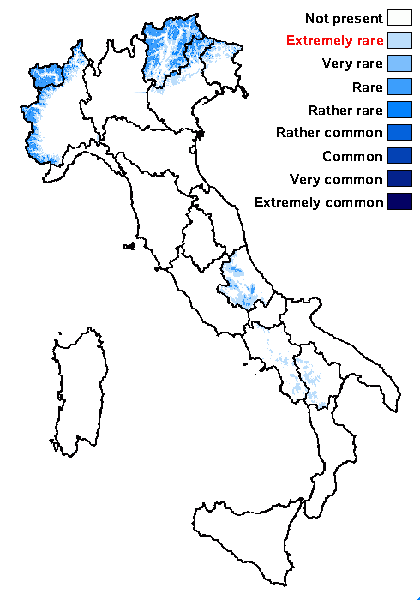
Predictive model
Herbarium samples
Growth form: Crustose placodiomorph
Substrata: rocks
Photobiont: green algae other than Trentepohlia
Reproductive strategy: mainly sexual
Commonnes-rarity: (info)
Alpine belt: rare
Subalpine belt: rather rare
Oromediterranean belt: very rare
Montane belt: extremely rare
Submediterranean belt: absent
Padanian area: absent
Humid submediterranean belt: absent
Humid mediterranean belt: absent
Dry mediterranean belt: absent

Predictive model
| Herbarium samples |
 Index Fungorum
Index Fungorum
 GBIF
GBIF
